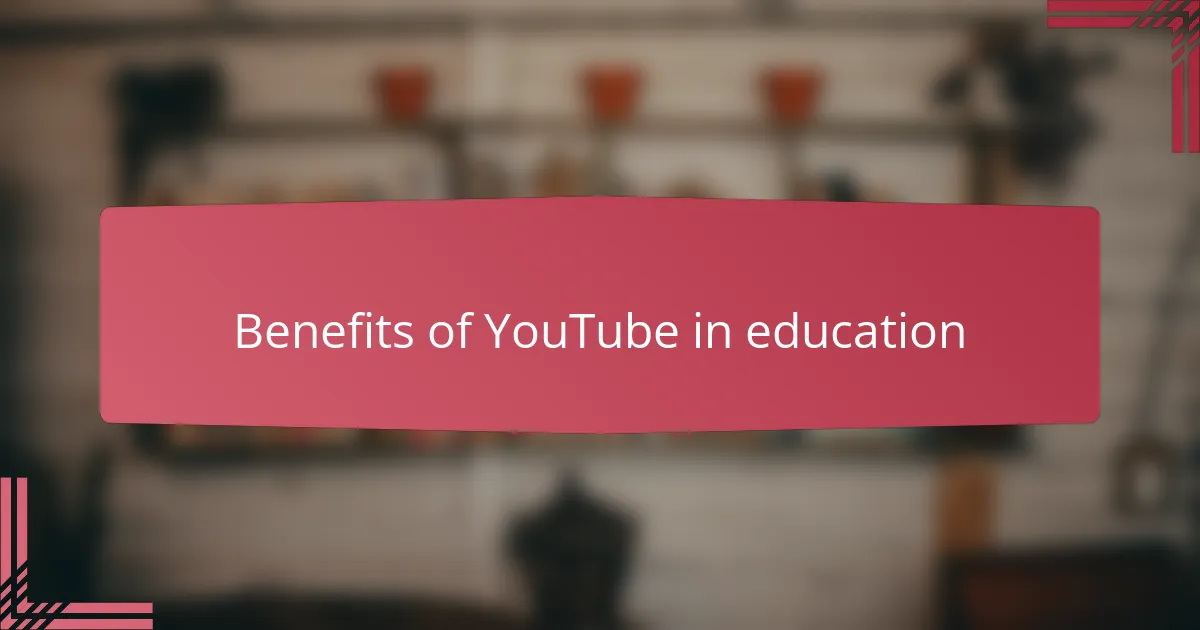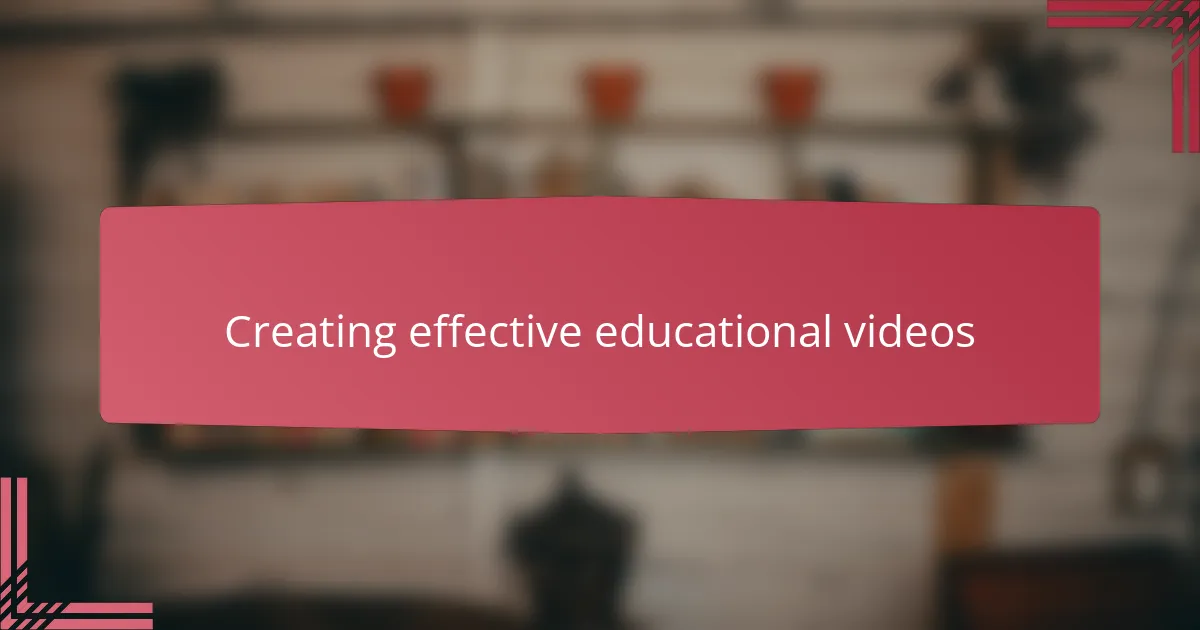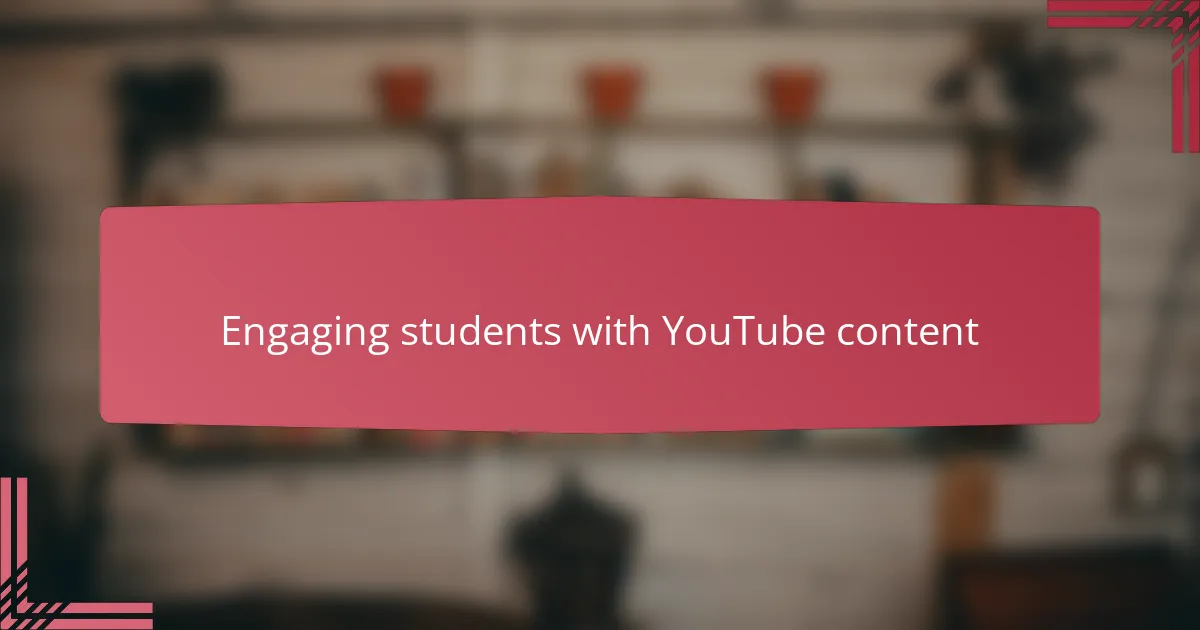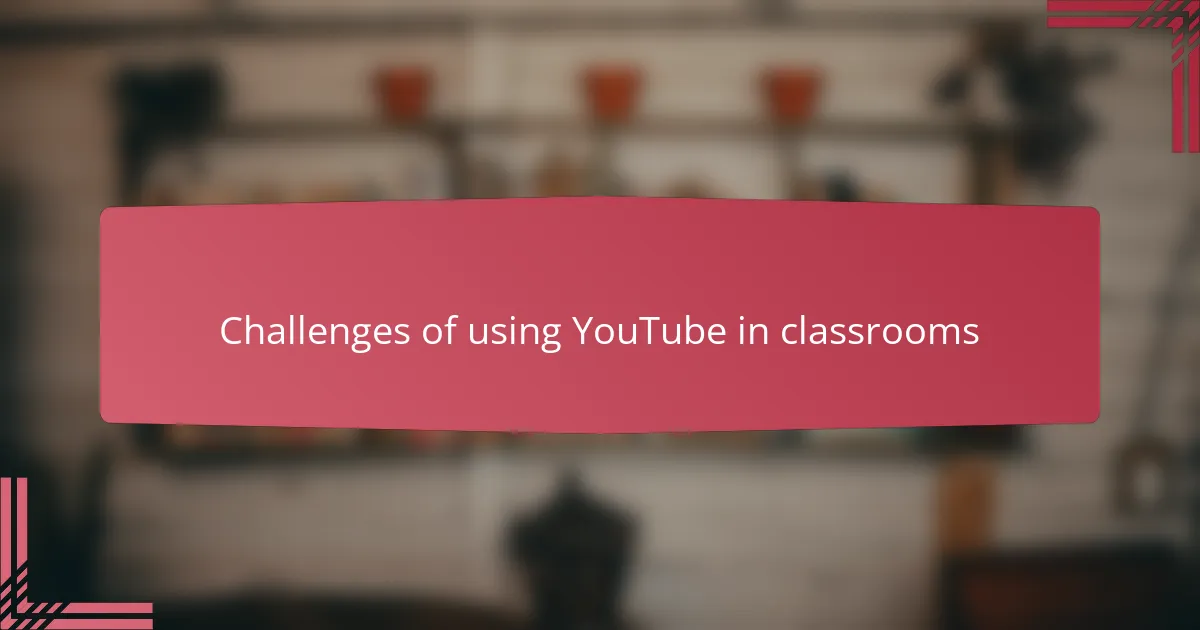Key takeaways
- Activist teacher resources inspire critical thinking and engage students in real-world issues, promoting social justice and empowerment.
- YouTube fosters a dynamic learning environment, allowing students to access diverse perspectives and revisit lessons, enhancing independent learning.
- Creating effective educational videos requires clarity and authentic engagement to connect with students and facilitate deeper understanding.
- Challenges include unpredictable content quality, accessibility issues, and the need to maintain focus during lessons while utilizing digital tools.

Understanding activist teacher resources
Activist teacher resources, in my experience, go beyond lesson plans; they’re tools to challenge norms and inspire critical thinking. I’ve often asked myself, how can we equip students not just with knowledge, but with the courage to question and act? These resources become powerful when they connect real-world issues to the classroom, making learning deeply relevant.
What strikes me is how these materials reflect a commitment to social justice, equity, and empowerment. When I use them, I feel a sense of purpose—like I’m not just teaching content, but nurturing agents of change. It’s a reminder that education is inherently political, and our resources should reflect that reality.
I wonder, though, how we strike a balance between guiding students and encouraging independent thought. Activist teacher resources, to me, are most effective when they provoke questions rather than provide all the answers. Isn’t that the point of education—to spark curiosity and create space for critical dialogue?

Benefits of YouTube in education
When I first started integrating YouTube into my teaching, I was amazed by the sheer variety of perspectives available. It’s like having a global classroom at your fingertips, where students can see issues through different lenses. Doesn’t that open up so many opportunities for critical thinking and deeper understanding?
What truly stands out to me is how videos can bring complex or abstract concepts to life. I remember showing a short documentary on environmental activism—students who had struggled with textbook explanations suddenly connected emotionally and intellectually. This kind of engagement feels more authentic and memorable.
I often ask myself, why stick to traditional lectures when YouTube offers such dynamic content? The platform’s accessibility means students can revisit lessons anytime, fostering independence in their learning journey. Isn’t that exactly what we want—to empower students to take charge of their education?

Setting up YouTube for teaching
Setting up YouTube for teaching starts with creating a dedicated channel that reflects your classroom’s unique focus. I remember the first time I named my channel—I wanted it to feel inviting and purposeful, something that students would recognize as a space for thoughtful dialogue, not just another video library. Have you thought about how the channel’s identity might influence students’ engagement?
Next, organizing playlists has been a game-changer for me. It’s like crafting a roadmap for students, guiding them through themes or projects without overwhelming them with too many options. When I grouped videos around topics like climate justice or civic activism, the learning felt more intentional and connected—do you see how this kind of structure might help sustain focus?
Finally, I highly recommend spending time adjusting privacy and comment settings thoughtfully. Balancing openness with a safe space isn’t always straightforward, but I’ve found that moderating comments and using unlisted videos can keep discussions respectful and on track. How do you ensure your digital classroom stays welcoming and productive?

Creating effective educational videos
Creating effective educational videos, from my experience, starts with clarity and purpose. I’ve found that when I focus on one key idea per video, it helps students digest the information without feeling overwhelmed. Have you ever noticed how shorter videos often hold attention better than longer, cluttered ones?
Visuals are equally important. I remember a time when I used simple graphics to explain a concept about social justice, and the students’ faces lit up—they could finally see the connections I was trying to make. It’s amazing how thoughtful visuals can transform abstract ideas into something tangible and engaging.
I also wonder about authenticity in videos. When I share my genuine enthusiasm or even admit when I don’t have all the answers, it creates a space where students feel safe to explore and question. Doesn’t that honesty foster deeper learning and trust more than polished, scripted content?

Engaging students with YouTube content
Engaging students with YouTube content has often felt like unlocking a new dimension in my teaching. I recall a moment when a student paused a video to jot down questions, sparking a lively discussion that textbooks alone never inspired. Have you noticed how visuals paired with real voices make issues resonate on a personal level?
Sometimes, I wonder if the key to engagement lies not just in the content itself but in how students interact with it. For instance, I encourage my students to respond with their own video reflections or comments, turning passive watching into active participation. Doesn’t this shift transform learning from a one-way street into a dynamic conversation?
What excites me most is watching students connect diverse perspectives through curated YouTube playlists. When they bring their insights into class debates, I see genuine enthusiasm that feels rooted in curiosity rather than obligation. Isn’t that the kind of engagement we strive for—to ignite a desire to explore beyond the screen?

Challenges of using YouTube in classrooms
One challenge I often grapple with is the unpredictable nature of YouTube’s content. I’ve had moments when, mid-lesson, a video’s ads or suggested clips suddenly shift the focus away from our topic. Have you ever tried to keep a discussion on track when unrelated or inappropriate content appears unexpectedly? It can feel like walking a tightrope between opportunity and distraction.
Another difficulty lies in the varying quality and biases of videos available. I remember spending hours vetting clips because some presented activism in a shallow or skewed manner, which could confuse or mislead students. Doesn’t it make you wonder how we ensure that the resources truly reflect the critical perspectives we aim to cultivate?
Lastly, access and equity remain real concerns. Not every student has a reliable internet connection or device to watch videos outside class, which can create a gap in learning opportunities. How do we, as activist educators, address these disparities while still embracing digital tools like YouTube? It’s a tension I’m constantly navigating.